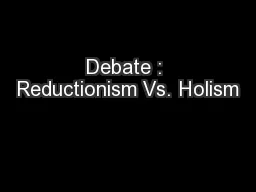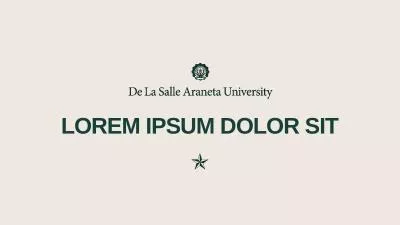PPT-Lorem Ipsum Dolor Reductionism and Holism
Author : tawny-fly | Published Date : 2018-10-24
Issues and Debates What are they Gender and culture in psychology universality and bias Gender bias including androcentrism and alpha and beta bias cultural bias
Presentation Embed Code
Download Presentation
Download Presentation The PPT/PDF document "Lorem Ipsum Dolor Reductionism and Holis..." is the property of its rightful owner. Permission is granted to download and print the materials on this website for personal, non-commercial use only, and to display it on your personal computer provided you do not modify the materials and that you retain all copyright notices contained in the materials. By downloading content from our website, you accept the terms of this agreement.
Lorem Ipsum Dolor Reductionism and Holism: Transcript
Download Rules Of Document
"Lorem Ipsum Dolor Reductionism and Holism"The content belongs to its owner. You may download and print it for personal use, without modification, and keep all copyright notices. By downloading, you agree to these terms.
Related Documents














